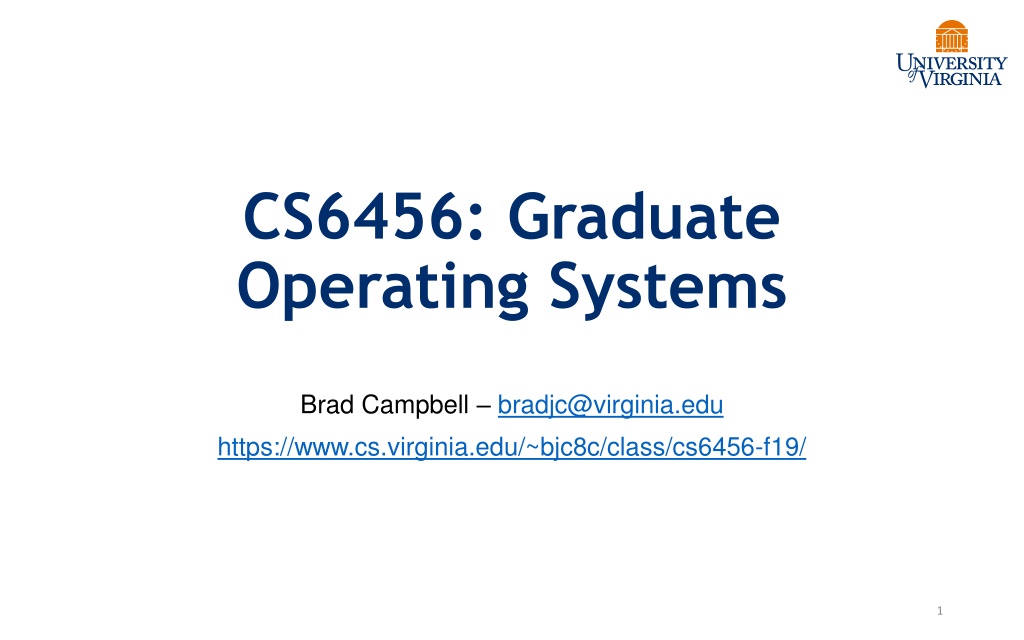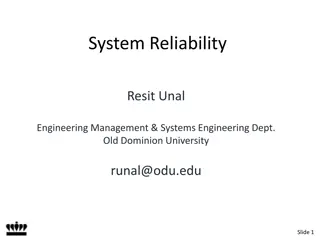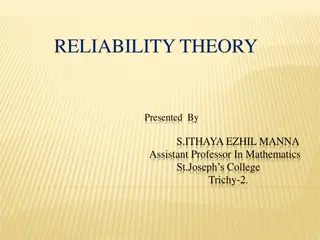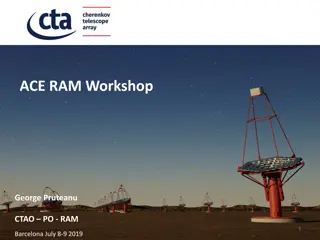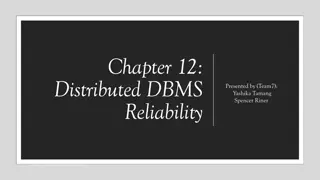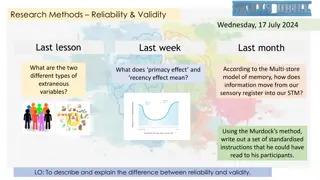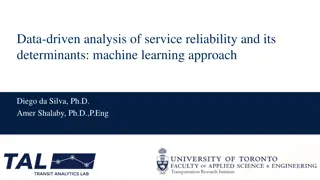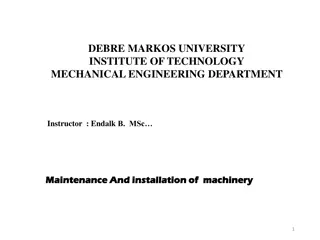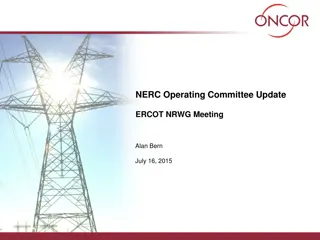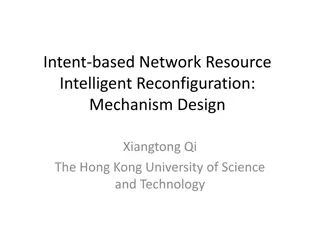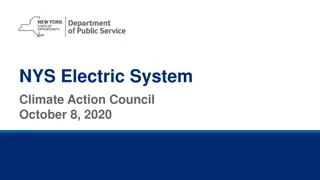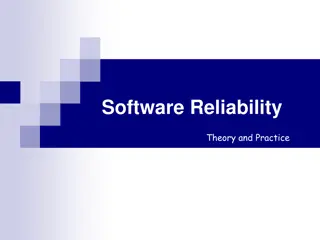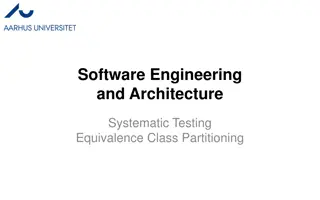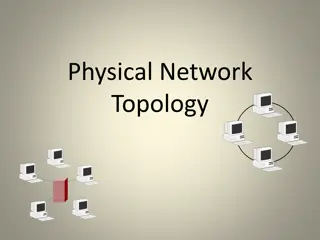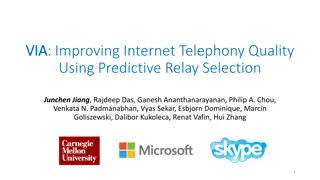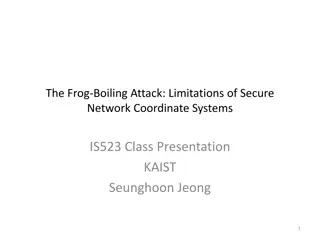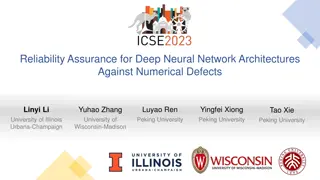Lessons in Network Reliability and Systems Design
Exploring the importance of end-to-end reliability in network communication, the examples highlight the pitfalls of assuming network perfection. From checksum failures in file copying to voting system flaws, the need for robust systems and user verification becomes evident. Emphasizing the challenges of low-level abstractions, the content underscores the complexity of ensuring functionality and integrity across various applications.
Download Presentation

Please find below an Image/Link to download the presentation.
The content on the website is provided AS IS for your information and personal use only. It may not be sold, licensed, or shared on other websites without obtaining consent from the author. Download presentation by click this link. If you encounter any issues during the download, it is possible that the publisher has removed the file from their server.
E N D
Presentation Transcript
CS6456: Graduate Operating Systems Brad Campbell bradjc@virginia.edu https://www.cs.virginia.edu/~bjc8c/class/cs6456-f19/ 1
File transfer example Say you want to copy a file reliably across network Requirement: Read of file on machine A should return same data as on machine B One implementation Copy file across network Can verify by copying file, then re-reading and computing checksum (E.g., CRC or better yet SHA-1) Another implementation Build a perfectly reliable network Build perfectly reliable routers Build perfectly reliable disks, network cards, etc. Build perfectly reliable Operating System 2
Example 1: Multics source code disaster MIT had reliable network in multics era Gateways used a checksum on each hop Would catch any transmission errors Programmers assumed network reliable Since no transmission errors, file copy was simple. . . Turned out one of the gateways was flaky Exchanged a byte pair one in 106 times it copied bytes Corrupted vast quantities of multics source code Required checking against source code printouts to fix! So should have checked end-to-end anyway Link-by-link checksums weren t really useful 3
Example 2: ARPANET delivery guarantees Original ARPANET sent one message at a time Receiver responded with RFNM (request for next message) Network won t let you send next message until RFNM Turns out not to be useful Applications don t care if message was received Care if message was acted upon E.g., Want to know mail message has been spooled, not just read from network Had to send app.-level acknowledgments anyway App.-level ack makes RFNM totally redundant 4
Example 3: Voting Requirement: Vote counted should be vote intended by user Okay in old-fashioned voting systems User filled out paper ballot, checked contents In worst case could look at ballots by hand Failure 1 (Florida): Paper ballot not human readable So users don t notice hanging chads, etc. Failure 2 (e-voting): Users have no idea what computer is doing, no paper record at all Already evidence of serious flaws in voting machines Voters would have no way of detecting this! 5
Takeaways Instinctively we like modularity & clean interfaces Which means putting functionality in low-level abstractions Examples: Reliable communication In-order communication Secure communication But correct applications can t really exploit this So low-level functionality might be redundant Or might be insufficient Or might be harmful E.g., sending real-time audio over a reliable, in-order delivery channel 6
End-to-End Principle Implementing complex functionality in the network: Doesn t reduce host implementation complexity Does increase network complexity Probably imposes delay and overhead on all applications, even if they don t need functionality However, implementing in network can enhance performance in some cases e.g., very lossy link 7
Conservative Interpretation of E2E Don t implement a function at the lower levels of the system unless it can be completely implemented at this level Or: Unless you can relieve the burden from hosts, don t bother 8
Moderate Interpretation Think twice before implementing functionality in the network If hosts can implement functionality correctly, implement it in a lower layer only as a performance enhancement But do so only if it does not impose burden on applications that do not require that functionality This is the interpretation we are using Is this still valid? What about Denial of Service? What about privacy against intrusion? Perhaps there are things that must be in the network? 9
Hints for Computer System Design --- Butler Lampson, 1983 Based on author s experience in systems design Founding member of Xerox PARC (1970) Currently Technical Fellow at MSR and adjunct prof. at MIT Winner of ACM Turing Award (1992). IEEE Von Neumann Medal (2001) Was involved in the design of many famous systems, including databases and networks
Butlers big Principle Identify basic building blocks They should be useful, flexible But minimal: Pare down until nothing can be removed Then find the critical path and optimize the heck out of it!
Hints written in 1983 Have systems changed in ~35 years? 12
Functionality Among other operations, there is a procedure FindNamedField that finds the field with a given name. One major commercial system for some time used a FindNamedField procedure that ran in time O(n2), where n is the length of the document. 13
Today Small groups Each group is either a pro or con group Pro: Agree with Lampson Con: Take a contrary viewpoint to Lampson We will consider different hints Groups work together to strategize arguments for their side One person takes notes for the group Then we discuss as a class Everyone must take notes at least once Submit to collab 14
Page 7 When a low level of abstraction allows something to be done quickly, higher levels should not bury this power inside something more general. 15
Page 8 As long as it is cheap to pass control back and forth, an interface can combine simplicity, flexibility and high performance by solving only one problem and leaving the rest to the client. 16
Page 9 17
Page 12 18
Page 13 19
Page 18 20
Page 20 21
